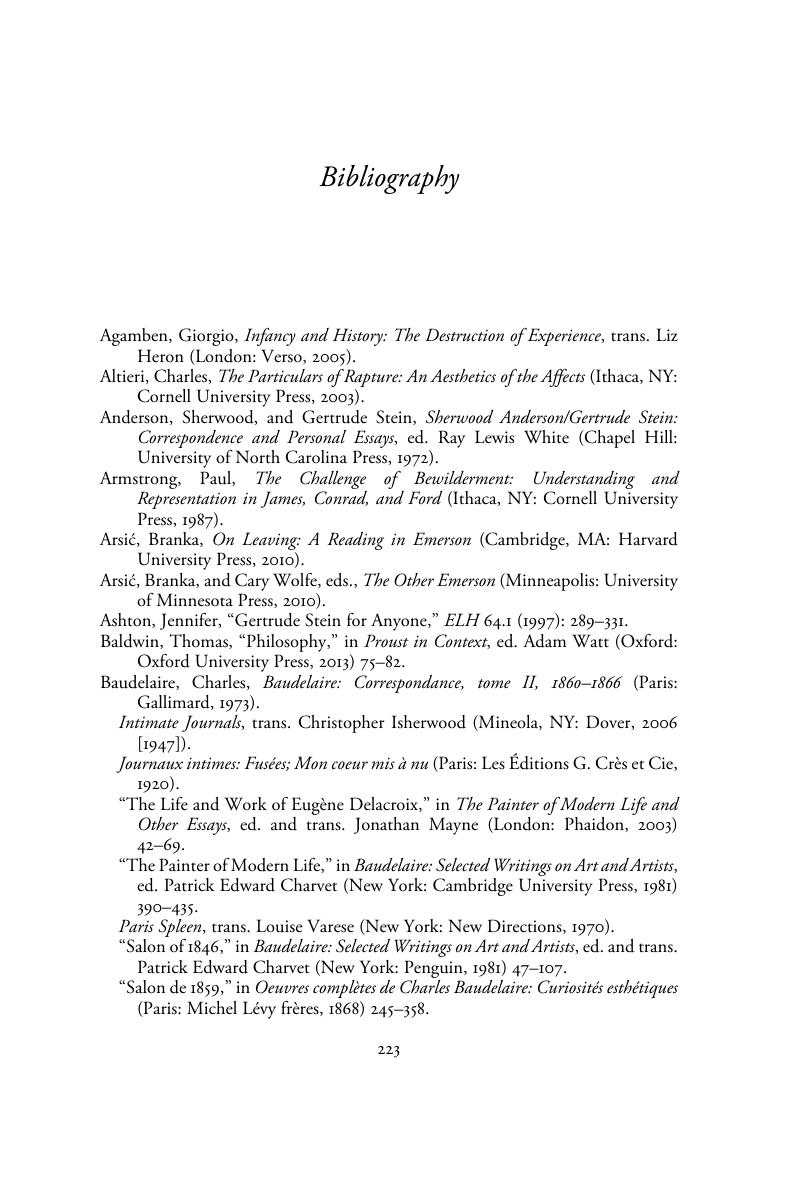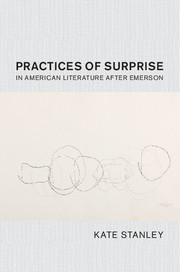Book contents
- Practices of Surprise in American Literature After Emerson
- Cambridge Studies in American Literature and Culture
- Practices of Surprise in American Literature After Emerson
- Copyright page
- Dedication
- Contents
- Acknowledgments
- Abbreviations
- Introduction
- Chapter 1 Marcel Proust’s Perceptual Training
- Chapter 2 Henry James’s Syntax of Surprise
- Chapter 3 Nella Larsen’s Novel Weather
- Chapter 4 Gertrude Stein’s Grammars of Attention
- Coda
- Notes
- Bibliography
- Index
- Recent books in this series, continued from page [ii]
- References
Bibliography
Published online by Cambridge University Press: 29 June 2018
- Practices of Surprise in American Literature After Emerson
- Cambridge Studies in American Literature and Culture
- Practices of Surprise in American Literature After Emerson
- Copyright page
- Dedication
- Contents
- Acknowledgments
- Abbreviations
- Introduction
- Chapter 1 Marcel Proust’s Perceptual Training
- Chapter 2 Henry James’s Syntax of Surprise
- Chapter 3 Nella Larsen’s Novel Weather
- Chapter 4 Gertrude Stein’s Grammars of Attention
- Coda
- Notes
- Bibliography
- Index
- Recent books in this series, continued from page [ii]
- References
Summary

- Type
- Chapter
- Information
- Practices of Surprise in American Literature After Emerson , pp. 223 - 236Publisher: Cambridge University PressPrint publication year: 2018



